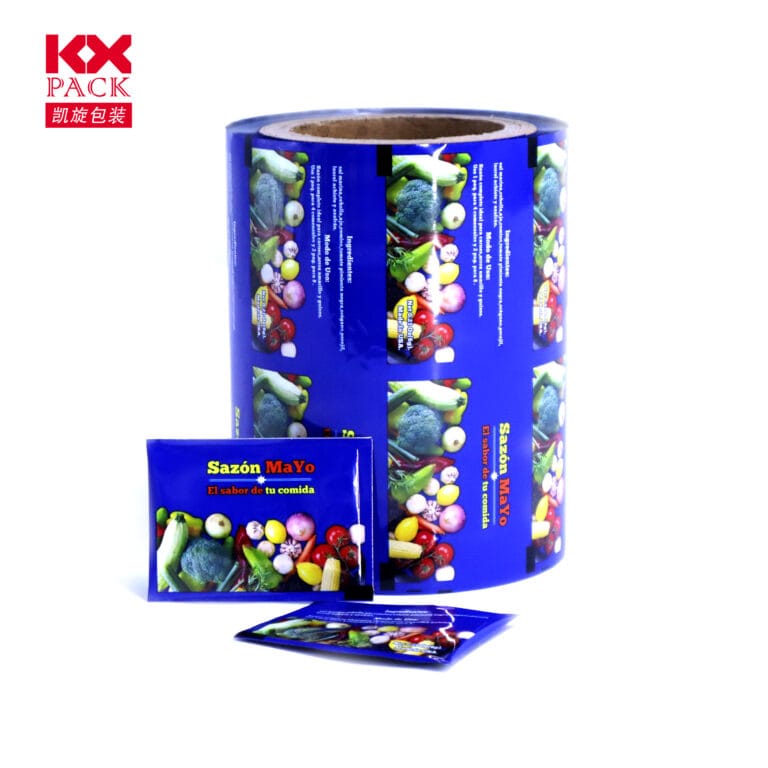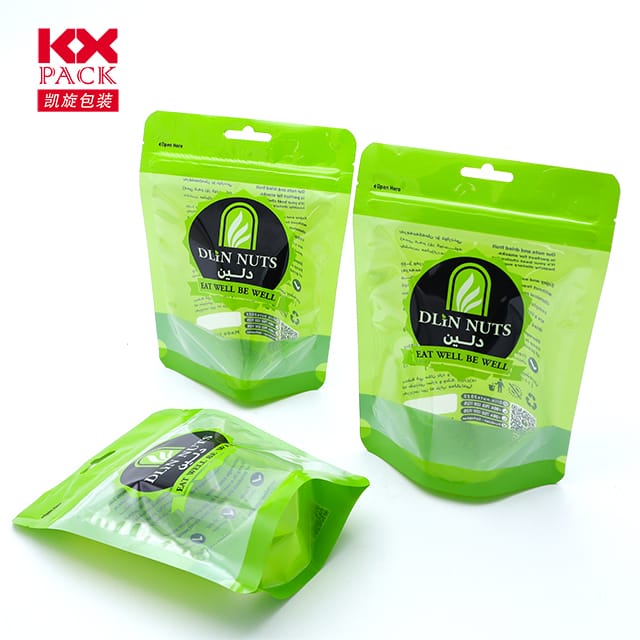Exploring the World of Printed Flexible Packaging Films: Innovations and Applications
Printed Flexible Packaging Films
У динамичном пејзажу модерне амбалаже, Printed Flexible Packaging Films have emerged as a cornerstone of innovation, offering a versatile and sustainable solution for a wide range of industries. From food and beverages to pharmaceuticals and consumer goods, these films play a crucial role in protecting products, Повећавање видљивости марке, and meeting the evolving demands of consumers and regulatory bodies.
What Are Printed Printed Flexible Packaging Films?
Printed Flexible Packaging Films are thin, pliable materials primarily made from plastics such as polyethylene (ПЕ), полипропилен (ПП), полиетилен терефталат (КУЋНИ ЉУБИМАЦ), and oriented polypropylene (Бопп), among others. These films can also incorporate metallized layers, paper substrates, or biodegradable materials like polylactic acid (Плашт) and PBAT to achieve specific functionalities. What sets them apart is their ability to be printed with high-quality graphics, text, and branding elements, making them an ideal choice for product packaging that requires both aesthetic appeal and functional performance.
Key Features and Benefits
- Проширени рок трајања: One of the primary advantages of printed flexible packaging films is their excellent barrier properties. By incorporating layers of materials like aluminum foil or ethylene vinyl alcohol (Евох), these films can effectively prevent the infiltration of oxygen, влаге, and other external factors that can degrade product quality. This is particularly crucial in the food industry, where maintaining freshness and flavor is paramount. На пример, a food packaging film with a shellac barrier coating can significantly extend the shelf life of perishable goods by protecting them from oxygen and water vapor.
- Enhanced Branding and Marketing: На данашњем такмичарском тржишту, brand visibility is everything. Printed flexible packaging films offer businesses the opportunity to showcase their brand identity through vibrant graphics, logos, and product information. Whether it’s a stand-up pouch, a flow wrap, or a vacuum-sealed bag, these films can be customized to meet specific design requirements, helping brands stand out on the shelves and connect with consumers on a deeper level.
- Cost Efficiency and Sustainability: Compared to rigid packaging solutions like glass or metal cans, flexible packaging films are lighter and more cost-effective to produce and transport. They also require less energy during manufacturing, reducing their carbon footprint. Moreover, with the rise of eco-conscious consumers, many manufacturers are now offering biodegradable or recyclable options, such as films made from PLA or PBAT, which can be composted or recycled after use, minimizing waste and environmental impact.
- Convenience and Versatility: Flexible packaging films are designed to be user-friendly, offering features like resealable zippers, easy-open tear notches, and stand-up bases for convenient storage and dispensing. They are also highly adaptable, allowing for a variety of packaging formats, including pouches, кесе, sachets, and wraps, making them suitable for a wide range of products and applications.
Technological Advancements in Printing and Production
The production of Printed Flexible Packaging Films has witnessed significant technological advancements in recent years, driven by the need for higher quality, faster turnaround times, and greater sustainability.
- Flexographic Printing: One of the most popular printing methods for flexible packaging, flexographic printing uses a flexible relief plate to transfer ink onto the film substrate. This technique is known for its high-speed capabilities, економичност, and ability to print on a wide range of materials, including non-absorbent substrates like plastics and foils. With the development of water-based and UV-curable inks, flexographic printing has also become more environmentally friendly.
- Дигитално штампање: Digital Printed Flexible Packaging Films has revolutionized the packaging industry by enabling on-demand, short-run production of customized packaging solutions. Unlike traditional printing methods, digital printing does not require the use of printing plates, making it faster, more flexible, and cost-effective for small to medium-sized production runs. This technology is particularly beneficial for brands looking to launch limited-edition products, personalize packaging for specific markets, or respond quickly to changing consumer trends.
- Barrier Coatings and Laminations: To enhance the functional properties of Printed Flexible Packaging Films, manufacturers often apply barrier coatings or laminate multiple layers of materials together. These coatings can provide added protection against moisture, кисеоника, светло, and other external factors, ensuring product integrity and safety. На пример, a film with a vapor barrier coating can prevent the migration of moisture into the package, which is essential for maintaining the quality of dry goods like snacks and coffee.
- Sustainable Materials and Processes: In response to growing environmental concerns, the packaging industry is increasingly focusing on developing sustainable materials and production processes. This includes the use of biodegradable films, Рециклирани садржај, and water-based inks, as well as the implementation of energy-efficient manufacturing practices. На пример, some companies are now offering films made from renewable resources like sugarcane or wood pulp, which can be composted or recycled at the end of their life cycle.
Апликације широм индустрије
Printed flexible packaging films are used in a diverse range of industries, each with its own unique set of requirements and challenges.
- Храна и пиће: In the food industry, flexible packaging films are used to package a wide variety of products, including snacks, confectionery, dairy, месо, and bakery items. These films must meet strict food safety standards and provide adequate barrier protection to extend shelf life and maintain product quality. На пример, a flexible film with a high-oxygen barrier can prevent the oxidation of fats and oils in snack foods, keeping them fresh and crispy for longer.
- Фармацеутски производи: Pharmaceutical packaging requires high levels of protection, sterility, и поштовање регулаторних стандарда. Flexible packaging films are used to package tablets, capsules, powders, and liquids, ensuring product integrity and patient safety. Features like child-resistant closures, tamper-evident seals, and moisture-resistant barriers are essential in this industry.
- Personal Care and Cosmetics: The personal care and cosmetics industry relies on flexible packaging films to package products like shampoos, lotions, creams, and makeup. These films must be aesthetically appealing, easy to use, and able to protect the product from contamination and degradation. На пример, a stand-up pouch with a resealable zipper can provide convenient dispensing and storage for liquid soaps and lotions.
- Consumer Goods: Flexible packaging films are also used to package a wide range of consumer goods, including household cleaners, pet food, gardening products, and automotive supplies. These films must be durable, економичан, and able to withstand the rigors of transportation and storage. На пример, a heavy-duty bag made from a high-strength film can protect pet food from moisture and pests, ensuring its freshness and safety.
Future Trends and Innovations
As the packaging industry continues to evolve, several trends and innovations are shaping the future of printed flexible packaging films.
- Паметно паковање: The integration of smart technologies like RFID tags, sensors, and QR codes into flexible packaging films is enabling new levels of traceability, authenticity, and consumer engagement. На пример, a time-temperature indicator (TTI) can be printed onto a food package to monitor the product’s temperature history and alert consumers if it has been exposed to unsafe conditions.
- Active Packaging: Active packaging films are designed to interact with the product or its environment to extend shelf life, improve quality, or enhance safety. На пример, a film with antimicrobial properties can inhibit the growth of bacteria and fungi, reducing the risk of food spoilage and contamination.
- 3D Printing: 3D printing technology is being explored for the production of customized flexible packaging solutions, offering greater design flexibility and the ability to create complex geometries that are not possible with traditional manufacturing methods. This technology has the potential to revolutionize the packaging industry by enabling on-demand production of personalized packaging for niche markets.
- Circular Economy Initiatives: As the world moves towards a more circular economy, the packaging industry is focusing on developing materials and processes that promote recycling, reuse, and composting. This includes the use of monomaterials, which are easier to recycle, and the development of chemical recycling technologies that can break down plastics into their original building blocks for reuse.
Закључак
Printed flexible packaging films are a testament to the innovation and adaptability of the packaging industry. With their ability to combine functionality, естетика, и одрживост, these films are transforming the way products are packaged, distributed, и конзумиран. As technology continues to advance and consumer demands evolve, the future of printed flexible packaging films looks bright, with endless possibilities for new applications, материјала, and innovations. Било да сте произвођач хране, фармацеутска компанија, or a consumer goods brand, embracing the potential of printed flexible packaging films can help you stay ahead of the curve and meet the needs of today’s dynamic market.







